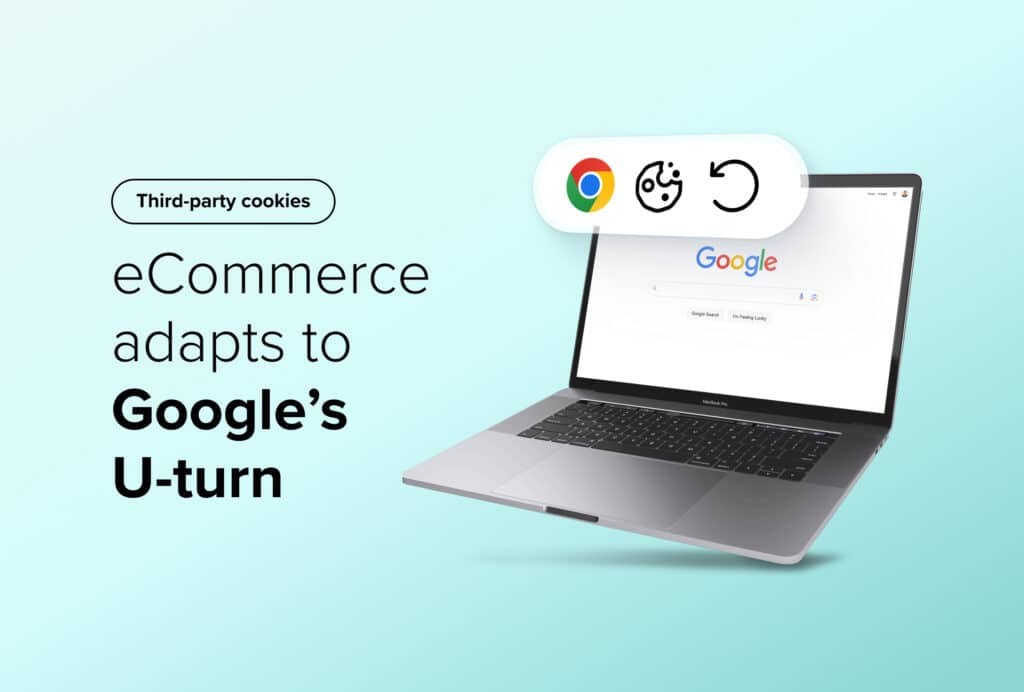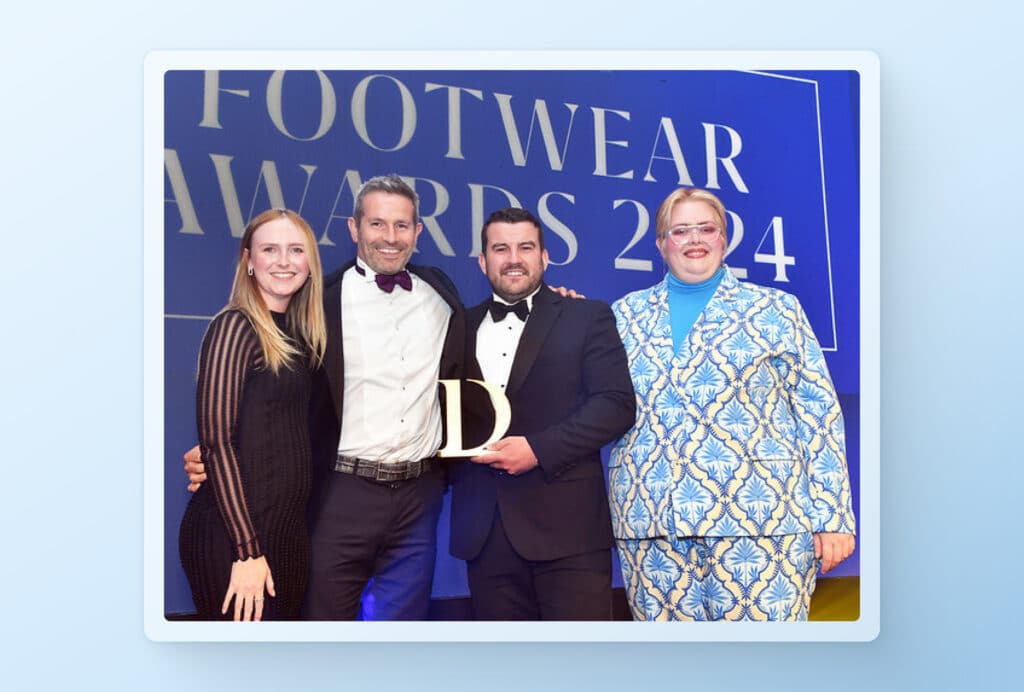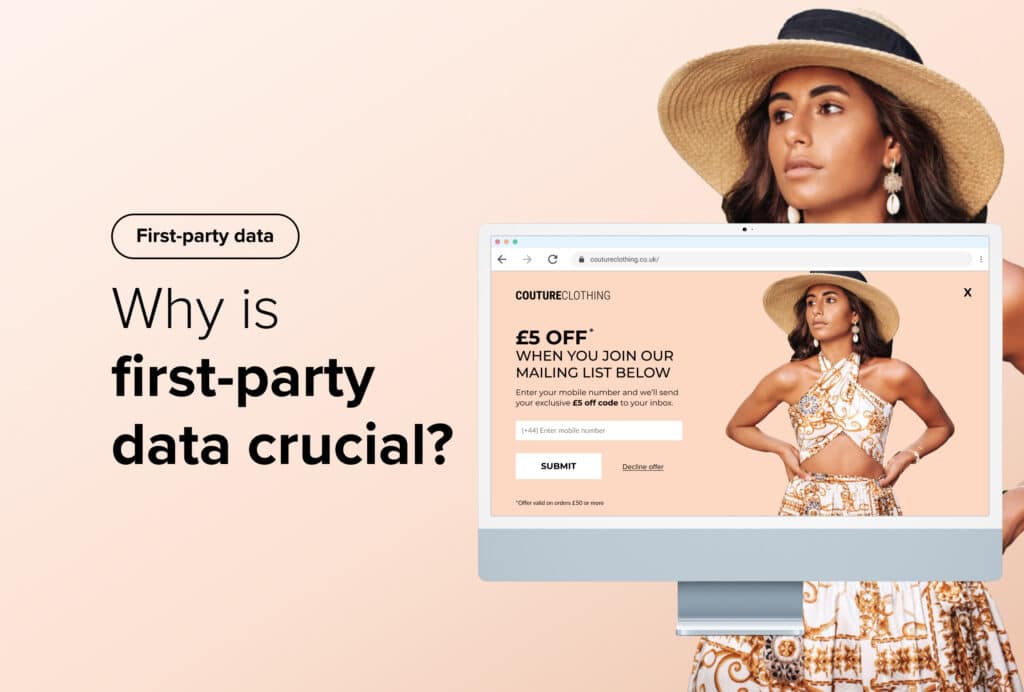First-Party Data Dominance: The Power of Email Subscriber Lists
By Courtney O'Riordan • Last updated: Wednesday Jul 24th, 2024
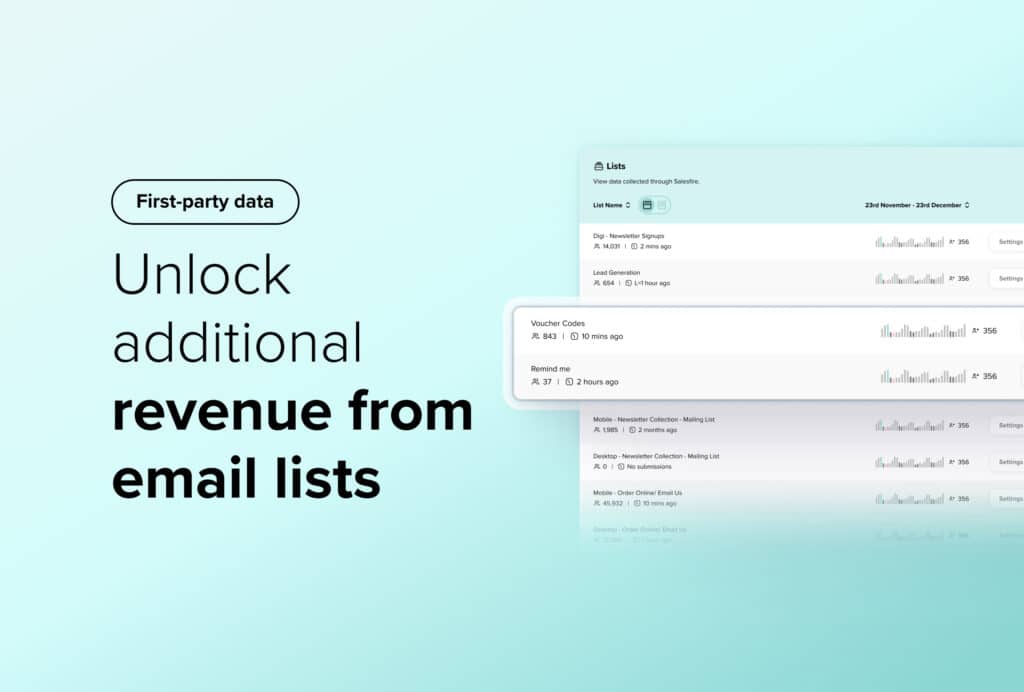
Achieving eCommerce success in a privacy-conscious digital landscape requires retailers to build customer relationships that go beyond transactional communications.
This is only possible if online stores master their first-party data collection and customer communication, particularly through email marketing.
Making the most of email lists will allow brands to remain competitive and unlock the long-lasting benefits of customer loyalty.
In this article, we’ll discuss why your email list is key to future-proofing your marketing for eCommerce success.
Why and how to grow your email list
In an uncertain digital landscape where privacy regulations threaten to change at any moment, the eCommerce industry should switch its focus to rely on zero-party and first-party data to drive their marketing efforts.
This is data that a customer either intentionally shares with a company or is collected when users interact with your site or marketing.
Both forms of data provide online retailers with the advantage of owning and collecting data directly from their customer base. Luckily, this data already exists in your email lists.
Using your email lists effectively means you can continue to personalise communication, target specific customers and gather valuable insights into your audience.
Consider implementing the following strategies to do grow your email list organically:
- Incentivised newsletter sign-ups: Encourage website visitors to subscribe to your newsletter in exchange for an exclusive discount. This not only motivates users to share their email addresses and other key info but also fosters a sense of value for being part of the brand community.
- Provide valuable content: Offer informative and engaging content that aligns with the interests of your target audience. Whether it’s educational resources, product guides or entertaining content, providing value encourages users to subscribe and stay connected, increasing customer lifetime value.
- Transparency in data collection practices: Clearly communicate your data collection practices and reassure users about your responsible and transparent use of their information. Being transparent about data usage is crucial in building trust and fostering a positive relationship with your audience.
By incorporating these strategies, eCommerce sites can build a more direct, meaningful and profitable connection with their customers.
Suggested reading: Discover the importance of incentivised email collection methods when it comes to achieving sustainable eCommerce growth with our article, ‘How to Grow Your Email‘.
How to calculate the value of your email list
By calculating the value of an email subscriber, you can uncover the true value of your email lists and learn how much each subscriber is worth to your business.
To calculate the value of an annual subscriber, follow this formula:

Accurately working out this figure will allow you to monitor the effectiveness of building your email lists in the future.
6 ways email lists drive eCommerce success
Understanding the value of your email subscribers will help you unlock additional revenue flows from your existing customers and site visitors.
Let’s explore the value of your email list and how you can maximise the advantages it can provide your business with.
1. Provides the data needed to personalise ads
Leveraging the first-party data available from your email lists will enable you to target audiences with tailored campaigns to achieve your ad goals, whether that be improving brand awareness or increasing sales.
Email lists should be recognised for the large amount of information they hold. When analysed, businesses can begin to segment their audience based on:
- Demographic: Email addresses often come with user data such as age, gender, and location.
- Behaviour patterns: Looking at email engagement, click-through rates, and open rates can reveal how engaged a customer is with your brand.
- Purchase history: When linked with a customer account, email addresses can provide insight into the relevance of products for particular customer segments.
- Content preferences: Paying attention to how recipients interact with different content types should inform future decisions.
- Device usage: Desktop or mobile preferences reveal where you should optimise your content.
These are just a few examples of the information you can gain from first-party data that can then be used to craft relevant and personalised ads.
As the relationship between your brand and your email subscribers evolves, the more you can enhance your ad performance to increase conversions.
2. Deliver direct and tailored communication
Retailers are now challenged with finding ways to sustain personalised campaigns and targeted messaging in a privacy-first marketing era.
The solution to this lies within your email newsletters.
Harnessing the power of speaking directly with your targeted audience, made up of first-party data, can allow you to transform your communications into profit.
As they interact with your emails, you gain valuable first-party insights into behaviour and preferences that you can use to personalise future campaigns and communications.
With your messaging being a potential treasure trove of customer data and conversions, creating high levels of email engagement is essential.
You can optimise your emails for maximum engagement by including:
- Personalisation tactics: Personalising your subject lines with the recipient’s name is the easiest way to begin speaking directly to your subscriber and increase your open rate.
- Promotions: Reward email lists with subscriber-only deals or make them aware of time-sensitive offers to highlight the benefits of being on your mailing lists.
- Educational content: Provide extra information, such as tips and tricks for popular products, to further integrate your brand into your customers’ lives.
- Product recommendations: Act on cross-selling opportunities by sending subscribers genuinely relevant recommendations based on on-site behaviour and past purchases.
Maximising this potential with the points listed above will see your email lists provide the knowledge needed to create future marketing campaigns and achieve a sustainable increase in conversion rates.
What you can do: Deploy Salesfire’s Post-purchase Recommendations Email campaign to ensure that you are fulfilling your customer’s need for personalised communication while growing your sales.
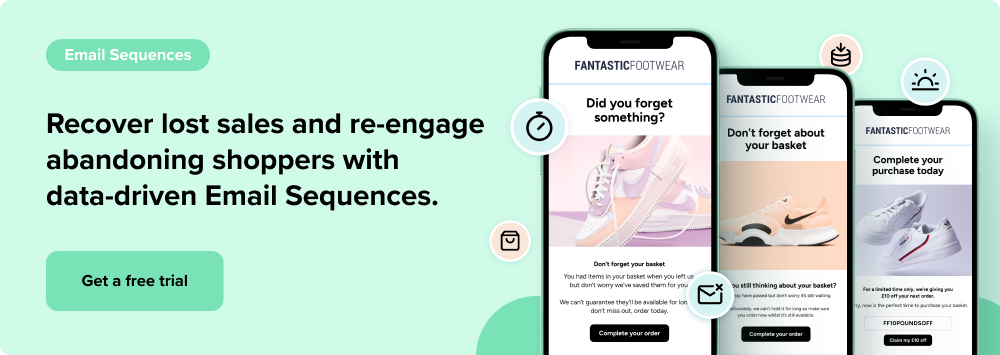
3. Build customer relationships
Modern consumers are highly privacy-conscious. Therefore, it should be your priority to promote transparency and trust surrounding your data usage to build strong retailer-customer relationships.
Beyond this, you can continue to create meaningful connections with those on your subscriber list by creating drip campaigns such as:
- Welcome emails: Start your relationship with your customers the way you mean to go on by welcoming them to your brand. Introduce your company, provide information about your products/services and even offer future purchase discounts to begin building trust immediately.
- Birthday offers: Show your appreciation by sending out birthday offers. While continuing to build loyalty, you can expect to create new purchase opportunities.
- Abandoned cart reminders: There are many reasons a customer may add to their cart without purchasing. Combat this with a sequence of abandoned cart emails to encourage browsers to complete their order.
- Re-engagement sequences: Reignite the interest of disengaged customers to ensure that you are reaping the full benefits of your email list. Provide updates on your company to show what they’re missing or incentivise their return to your site with a discount code.
These strategies can be highly effective in strengthening the retailer-consumer relationship, helping to foster loyalty and encourage future purchases.
Pro tip: Encourage on-site customers to complete your newsletter opt-in form with the incentive of a discount code.
Once signed up, confirm their voucher code within their welcome email to increase the potential of them becoming repeat purchasers.
4. Maximise customer lifetime value
Once you’ve established a strong connection with your customers, focus your efforts on maximising their value to you.
As a brand, you should strive to increase the profit you generate from a customer throughout their relationship with you.
Implementing cross-selling and upselling strategies into your emails will allow you to do exactly that.
To successfully deploy these strategies, use segmentation to split your subscribers into smaller lists based on specific criteria, such as location, purchase frequency or on-site behaviour.
From there, you’ll be able to target specific lists with products tailored to them.
This will provide your subscribers with the content they want to receive while allowing you to increase product interaction and revenue.
5. Drives traffic and sales
If you’re looking to achieve long-term success, almost every move you make should be revenue-driven.
In an eCommerce context, this goal can be achieved by driving traffic to your site and encouraging purchases.
Thankfully, a strong email list offers the means to do this.
With a sale potentially just an email away, your emails must be optimised with:
- Compelling copy: Uphold a consistent and recognisable tone of voice alongside engaging copy to build trust.
- Clear call-to-actions: Make CTAs easy to follow and understand. For example, a simple ‘buy now’ button towards the top of an email will garner more clicks than if it were placed at the very bottom.
- Time-sensitive offers: Create urgency with countdown timers to emphasise the
limited availability of an offer to encourage quick purchases.
By using these tactics throughout your sequences, you can consistently drive traffic to your site whilst drawing maximum value from your email lists.
Pro tip: Be mindful to balance promotional emails with value-driven content to maintain meaningful and long-term relationships with your customers.
What you can do: With 44.1% of visitors bouncing after viewing just one page, you must ensure your email CTAs link through to fully optimised landing pages to prevent this.
An optimised landing page features:
- High-quality product images
- Relevant and helpful product descriptions
- Strategically placed CTAs
For more actionable tips on how you can optimise your site to increase conversions, read The Ultimate eCommerce CRO Checklist.
6. Retain customers
Your retention strategies are equally as important as your subscriber acquisition tactics.
Once you’ve added contacts to your email list, you must make sure your sequences are ready to re-engage them with your site.
Since every customer journey looks different, taking advantage of automation and behavioural tracking is crucial.
A powerful way to do this is by deploying an Email Sequences tool, complete with pre-set triggers and campaigns to respond to individual users.
Not only can you hope to rekindle their interest when it comes to shopping on-site, but you can also expect to achieve an increase in retention rates.
What you can do: Focus on abandoned cart recovery to effectively use your email lists to re-engage customers in order to experience sales growth.
Offer the option for customers to save their baskets at checkout. This provides the opportunity to remind them of the purchase they almost made with an email.
This could be the difference between losing a browser and gaining a purchase.
Embrace the value of email lists
By focusing your efforts on building and using your email lists to further the lifetime value of your customers, you can secure your spot in the market for the future.
1 Building a more private web | Google Chrome
Maximise the value of your email lists with Salesfire, email one of our experts at [email protected] or book a free demo of our tools.

